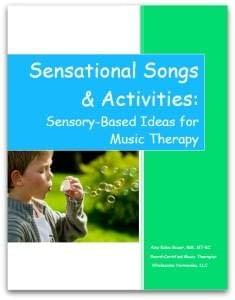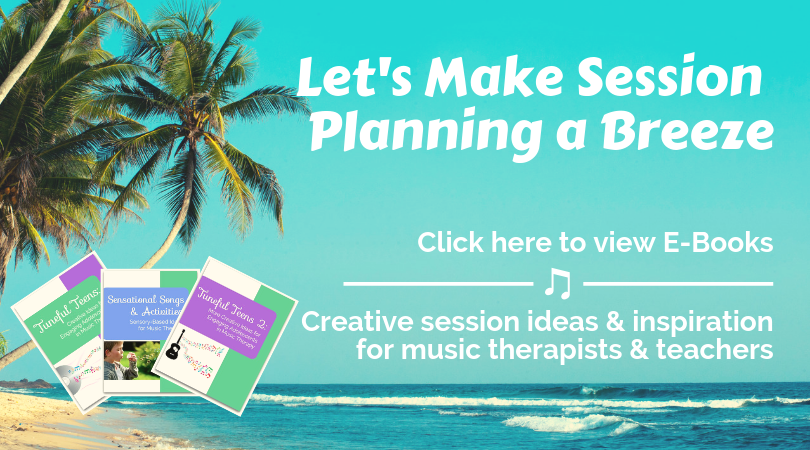Tactile Stimulation
Today I am starting a series about “sense-ational” music therapy activities.
Many of the children I work with at UCP’s Early Beginnings Academy have a diagnosis of severe and profound intellectual disability or autism spectrum disorder. Both groups of children benefit from what we call “sensory based” activities – activities that tap into our five senses.
Some examples of sensory based music activities include: feeling vibrations from the gathering drum or tone bar; listening to instruments like the gong or the kalimba that have unique sound qualities; or smelling pumpkin or cinnamon scents with an accompanying song.
Here is a video clip of a music therapy intervention where I am using the cabasa to provide tactile stimulation.
I wrote the song “Roll the Cabasa” to the tune of “La Cucaracha” and haven’t been able to get it out of my head since!
In Neurologic Music Therapy (NMT) terms, this intervention is known as Musical Sensory Orientation Training (MSOT).
Essentially, we are using music and instruments to access sensory channels, modify state, and provide sensory stimulation for neuronal growth. We are also looking to elicit basic behavioral responses such as dishabituation, localization, and visual tracking.
Did you pick up on those behaviors in this video? Here’s what I noticed, to name a few…
– Localization (turning the head towards the instrument sound)
– Head and body movement
– Visual tracking
– Eye opening
– Reaching out to touch the instrument
– Vocalizations
– Giggles!
What sense-ational music therapy activities are YOU using? Care to share?
Check out Sensational Songs & Activities E-Book for more ideas, sheet music, & themed session plans:




I like how you put what the goal is and what you’re looking for in sensory activities. I’d like to use more sensory based music but didn’t really know what the goal area is. Thanks!
You’re most welcome! I think it’s really important to have those goals clearly in our minds, and then pay attention for those behaviors that might seem “small” (i.e. the head movement or eye contact). Thanks for your comment!
I just wanted to let you know that the other day, my client reached inside the instrument bag to pick out what she would like to do next. She picked the cabasa. I was thinking “What in the world am I going to do or sing with this?” And in that moment, your song popped in my head! It was so great to have that on hand. I sang the same melody and added body parts to roll the cabasa on such as arm, leg, head, feet, tummy, etc. Thanks a lot!
Awesome!! You just made my day!
Hi Amy! I love this idea but where I work has limited resources (eg.only 1 of each cabasa, tambourine etc.) and I’d like to do this as a group activity , can you think of any other instruments that could provide stimulation like this?
Thankyou!
Hi Caroline! You could run a ribbed rhythm stick up and down the legs like a rolling pin. I’ve done this before and the kids really liked it!
I love that I came across your page and this video in particular. I am a pre-service teacher currently studying inclusive education and I need all the help I can get with formulation of activities and lesson plans. You have a beautiful soul.
Kind regards,
Kym
That is wonderful to hear! Thank you so much for your kind words. There are many, many ideas here on the blog, so dig in and I hope you get some creative inspiration!